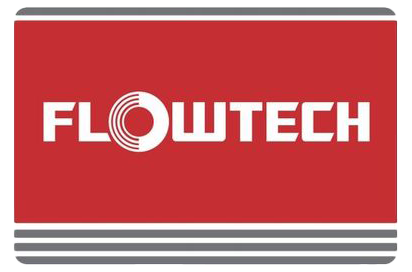Introduction
The rise of Industry 4.0 and the Internet of Things (IoT) is transforming industries worldwide. From predictive maintenance in manufacturing to real-time energy monitoring in utilities, data-driven systems are becoming the backbone of modern operations.
In this ecosystem, smart flow meters play a crucial role. Unlike traditional flow meters, smart meters provide real-time data, remote monitoring, and connectivity with IoT platforms, enabling industries to move towards automation, efficiency, and predictive analytics.
This blog explores how smart flow meters are powering digital transformation in Industry 4.0 and why businesses should adopt them.
What Makes a Flow Meter “Smart”?
Traditional flow meters measure liquid or gas flow rates. A smart flow meter, however, integrates advanced features such as:
- Digital Communication Protocols (HART, Modbus, Profibus, Ethernet/IP, wireless IoT).
- Real-Time Data Logging and cloud integration.
- Self-Diagnostics for predictive maintenance.
- Integration with SCADA/PLC/DCS for process automation.
- Wireless Connectivity for remote monitoring.
In short, smart flow meters don’t just measure flow—they act as data nodes in a connected industrial network.
The Role of Smart Flow Meters in Industry 4.0
1. Real-Time Monitoring and Control
With IoT-enabled smart meters, industries can monitor flow, pressure, and temperature in real-time. This ensures:
- Immediate detection of anomalies.
- Faster corrective action.
- Improved process stability.
For example, in refineries, real-time monitoring prevents costly shutdowns caused by leaks or flow interruptions.
2. Predictive Maintenance
Smart flow meters come with self-diagnostic features. They continuously assess performance and alert operators about calibration drifts, blockages, or wear-and-tear before failures occur.
This predictive maintenance approach:
- Reduces unplanned downtime.
- Extends equipment life.
- Lowers maintenance costs.
3. Data-Driven Decision Making
By integrating with cloud platforms and analytics tools, smart meters provide actionable insights.
- Manufacturers can track resource consumption trends.
- Utilities can optimize water and energy distribution.
- Management can use historical data for cost forecasting and efficiency improvements.
4. Seamless Integration with Automation
Smart meters connect with SCADA, PLC, and ERP systems. This integration allows:
- Automated flow adjustments.
- Better quality control in production lines.
- Streamlined inventory and supply chain planning.
For example, in food processing plants, smart flow meters ensure exact dosing of ingredients, maintaining product consistency.
5. Enabling Sustainability and Compliance
Industry 4.0 isn’t just about efficiency—it’s also about sustainability.
- Smart meters help reduce water and energy wastage.
- They provide audit-ready data for regulatory compliance.
- Real-time reporting ensures companies meet ISO, CGWA, and environmental standards.
Applications of Smart Flow Meters in Industry 4.0
- Oil & Gas: Leak detection, custody transfer, remote well monitoring.
- Water Treatment: Smart water distribution, leakage reduction, and CGWA compliance.
- Chemicals & Pharma: Precise dosing and batching for sensitive processes.
- Food & Beverage: Ingredient consistency and hygienic monitoring.
- Power Plants & Boilers: Steam flow monitoring for energy efficiency.
Benefits of IoT-Enabled Smart Flow Meters
- Accuracy & Reliability – Advanced sensors provide higher accuracy even in challenging conditions.
- Operational Efficiency – Automated control reduces human errors.
- Cost Savings – Lower downtime, optimized resource usage, and better forecasting.
- Scalability – Easy integration into existing digital ecosystems.
- Global Connectivity – Remote monitoring across plants and locations.
Challenges in Adopting Smart Flow Meters
While the advantages are significant, industries may face challenges like:
- High Initial Investment – Smart meters cost more upfront compared to traditional ones.
- Integration Complexity – Requires compatibility with existing systems.
- Cybersecurity Concerns – IoT-enabled devices must be secured against data breaches.
- Training Requirements – Operators need upskilling to manage smart devices.
The good news? Long-term ROI and efficiency gains far outweigh these initial challenges.
Best Practices for Implementing Smart Flow Meters
- Identify the Right Technology – Coriolis, electromagnetic, ultrasonic, or thermal meters depending on the application.
- Plan Integration Early – Ensure compatibility with SCADA, ERP, or IoT platforms.
- Ensure Cybersecurity – Use encrypted communication and secure gateways.
- Train Teams – Educate staff on using smart data for decision-making.
- Regular Calibration & Updates – Maintain accuracy and system efficiency.
Future Outlook: Smart Flow Meters in Digital Transformation
As Industry 4.0 evolves, smart flow meters will play an even bigger role. Trends include:
- AI-Driven Analytics – Using flow data for predictive modeling.
- Blockchain in Custody Transfer – Ensuring tamper-proof transaction data.
- 5G Integration – Faster, more reliable connectivity for IoT devices.
- Digital Twins – Creating virtual models of processes for testing and optimization.
Smart flow meters are not just measurement tools—they are key enablers of digital transformation.
Conclusion
The convergence of IoT, Industry 4.0, and smart flow meters is reshaping industries. From predictive maintenance to real-time monitoring, these devices provide the intelligence industries need to remain competitive in a digital-first world.
👉 At Flowtech Instruments, we provide smart flow metering solutions that integrate seamlessly into Industry 4.0 systems, helping businesses achieve efficiency, compliance, and sustainability.
📩 Contact us today to discuss how smart flow meters can power your digital transformation.


